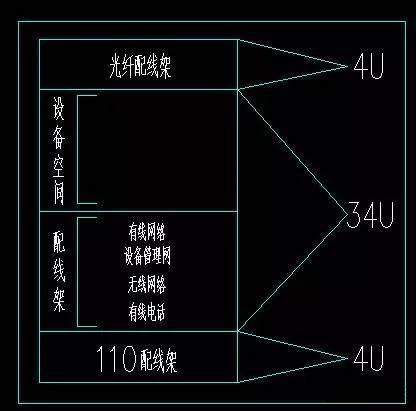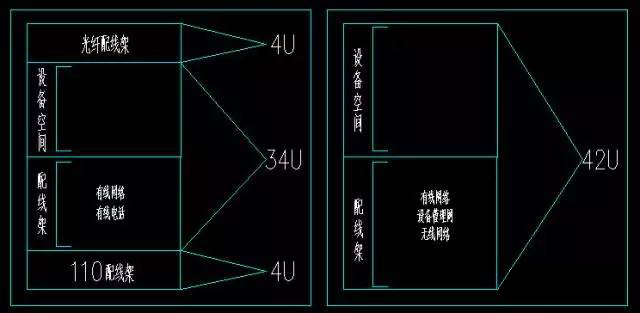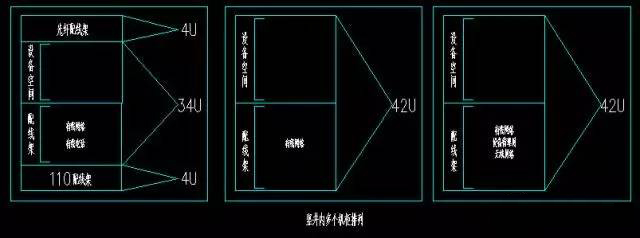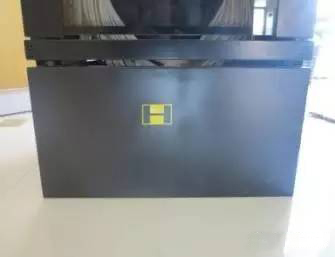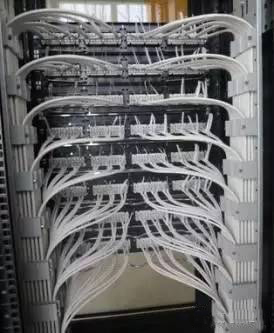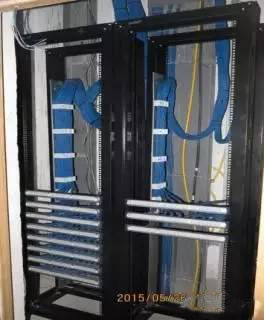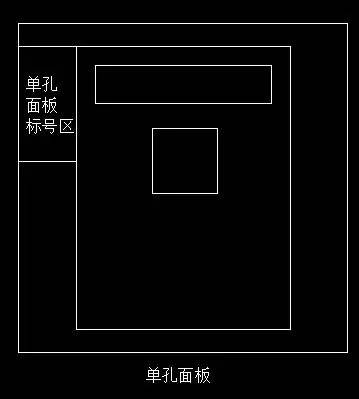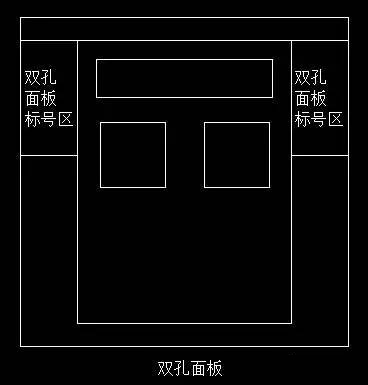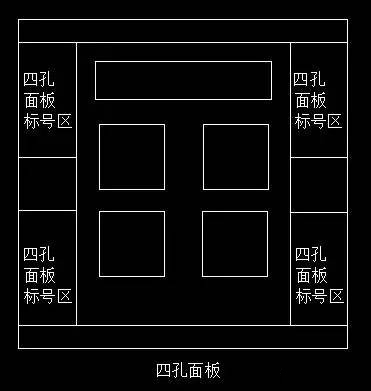The system network cabling uses a structured cabling system combining six types of unshielded cabling and five types of unshielded cabling. The wired network and wireless network cabling are six types of unshielded copper cables, six types of modules, and six types of finished jumpers. In addition, the wiring closet adopts six types of 24-module modular network distribution frames and six types of finished jumpers. All information points of the equipment management network use ultra-five unshielded four-pair twisted pair and ultra-five modules and super five finished jumpers. Wired data and voice points are swapped between the 24-port modular patch panel and the 110 voice patch panel in the wiring closet. Individual points in the classroom multimedia control desk using indoor multi-mode fiber optic cable.
First, the work area subsystem
The offices and classrooms in the building are designated as working areas. Each working area is equipped with a corresponding number of telephone and data terminal sockets, all of which are of the RJ45 type.
Second, the horizontal subsystem
General Information Point-to-floor patch panels are six-wire or four-pair non-shielded twisted pair copper conductors. Network cables require low-smoke, halogen-free cables.
Third, the management subsystem
The distribution frames of the wireless network point, the wired network point, and the device network point are independently configured and are not shared with other wiring systems.
Modules can be assembled with patch panels, and modules and finished jumpers must provide at least three colors.
Combine the settings of the management subsystem as much as possible between all layers of weak electricity (assuming that the horizontal copper cable does not exceed 90 meters)
Fourth, trunk subsystem
The 12-core single-mode optical fiber cable and the 3-type large logarithmic copper core cable in the building are used for the vertical main line to be laid vertically through the weak electric pipe shaft and led from the wiring closet on each floor to the equipment room (main wiring room). Fiber optic cable is used in network systems. The large logarithmic copper core cable is used for voice communication, and the vertical trunk copper core cable should satisfy the setting of at least 1 twisted pair for each voice point, and reserve space for expansion by 15%.
Fiber distribution frames should include couplers.
V. Inter-equipment subsystem
This part includes only the individual distribution lines of single buildings, optical cables from the weak room to the main wiring room, the termination of large logarithmic cables, and corresponding distribution frames.
In the network system aggregation cabinet, equipment such as network aggregation switches, optical fiber distribution frames, and copper cable distribution frames are properly set according to requirements. Among them, the optical fiber distribution frame should meet the optical fiber capacity between the center room and the floor-to-floor wiring.
The trunk communication cable and the termination patch panel from the campus data center to the general wiring closets of the individual buildings are not included in this tender. However, the relevant household pipelines reserved for pre-burial shall cooperate with the construction contractor and the tendering unit of the weak external pipe network for the relevant construction.
Sixth, cabinets and movable racks
Steel: High-quality cold-rolled steel sheet, thickness: The thickness of the main frame material 2.0MM, side plate thickness 1.0MM, other thickness 1.2MM. Mesh vented tempered glass doors, steel plate doors, sectional mesh vented steel plate doors) can be used in any combination to meet a variety of different applications. Each rack or movable rack needs two 8-bit PDUs. The maximum input current of the PDU is 16A, the output current is 10A, and the socket specification is 10A million holes. The cabinet weighs static load 1000KG.
Cabinets and movable racks should be equipotential grounded to the cabinet itself and equipment in accordance with national regulations.
1. Space planning in cabinets and racks of grid rooms
Ø The grid machine room cabinets and racks (hereinafter referred to as cabinets) are all considered in accordance with the standard 42U cabinets. The uppermost 4U space is dedicated to the optical fiber distribution frame, and the bottom 4U is dedicated to the 110 distribution frame. These two types of wiring The arrangement and connection of racks are arranged in order from top to bottom (if there is no such rack in individual cabinets, the space is reserved and shall not be occupied); in addition, the middle 34U space is a 24-module modular distribution frame. Special space for cable managers, cable managers, and switches. In this part of the space, 24 modular patch panels and their corresponding cable managers occupy the lower part, from top to bottom according to cable networks, device management networks, wireless networks, and wired telephones. The upper half of the 34U space in the middle is occupied by the switch and its cable manager, and is arranged in the order of wired telephone, wireless network, equipment management network, and wired network from top to bottom; among them, the distribution frame and the switch And the specific space and arrangement of the cable management device are arranged by the construction unit itself, but the maximum number of 24-module modular distribution frames is 8. If the number exceeds the number, the distribution frame and cable management device are installed in the next cabinet. And switches.
If there are two or more cabinets in a vertical shaft, the wired network and phone should be connected to the first cabinet and the device management network and wireless network should be connected to the second cabinet. Specifically as shown below:
Arrangement of a cabinet in a shaft
Arrangement of two cabinets in a shaft
Arrangement of multiple cabinets in a shaft
2, grid room cabinets and racks installed metal base and cable fixed line
The cabinet adopts the method of entering the line
A metal base shall be installed at the bottom of the cabinet. The size of the standard base shall be (600*600*300)mm. Cables reserved in the metal base shall be able to surround the internal space of the base in a circle (all 1.5 meters). The size and color of the base edge should be the same as the cabinet. As shown below:
The cabinet adopts the upper line
Due to the space limitations in weak electric wells and the requirements of Party A's requirement that the cabinets of the grid machine room cannot be separated, the upper line-in method shall be adopted. The bottom of the cabinet must not be fixed with a metal base. The cabinet should be placed in a compact and parallel manner. The left and right cross beams of the cabinet must not be fixed. The pulleys should be installed at the bottom of the cabinet to facilitate front and rear movement. There should be an independent reserved space for the upper line in each rack. The reserved space can be custom-built with a metal box or a wide bridge. The reserved cable should be taken into consideration when moving the cabinet up and down. When moving, the overhead cable should follow. The cable reserved in the metal box or bridge should be able to wrap around the inner space (both 2.0 meters).
Cable fixing in the cabinet
It is required that all the cabling cables in the grid room should be fixed by means of a wire-fixing device. The wire-retainer must be cabled from top to bottom and evenly distributed from left to right. The fixed model inside the cabinet is shown in the figure below:
Open rack installation and fixed line
Due to the limitation of the space of weak electric shafts, open racks should be used. The rack should be floor-standing, easy to move left and right. In the network room, the upper line-in mode should be adopted. There should be an independent upper line reserved space above each rack. The reserved space can be customized with metal boxes or wide bridges. Reserve cables above the cabinet should consider the distance between the left and right racks. When moving, the overhead cables should follow.
The cable reserved in the metal box or bridge should be able to wrap around the inner space (both 2.0 meters). The patch panel cable should be fixed according to the above terms.
VII. Production of coded labels for integrated wiring cables
Material: Water-proof, oil-proof, sun-resistant, high-temperature resistant, high-strength reinforced synthetic paper material, with industrial-grade viscose. With a variety of background colors to facilitate color management.
Production and installation process: Use laser printing to print labels. The label installation process is shown in the figure below:
Both ends of the permanent link network cable are attached in the above manner, one end is affixed to the cable inside the panel, and the other end is pasted to the connection point of the network distribution frame.
The permanent link adopts T-type synthetic paper labels. The code number is printed on the left side. The print size is set uniformly according to the font number specified by the school. The print font is Song-style and the T-type color is white.
The unified size of the panel is (86*86)mm. The panel model is divided into three types: single-hole panel, double-hole panel, and four-hole panel. The label area is shown in the figure below:
Panel labels are made of sub-silver paper, and the size is determined according to the actual situation on the site.
The contents of the wiring closet cabinet optical fiber distribution frame, network distribution frame, and 110 distribution frame are as follows:
Vertical arrangement
According to the space planning in the cabinet of the network room, the layout of the distribution frame is unified. The arrangement order is the optical fiber distribution frame, the network distribution frame, and the 110 distribution frame. For example, there are two fiber distribution frames in the cabinet because it is on the top of the cabinet, labeled “A, Bâ€; there are eight network distribution frames in the cabinet, labeled “C, D, E, F, G, H , I, Jâ€; There are three 110 distribution frames in the cabinet, labeled “K, L, Mâ€. If there is also a distribution frame on the other cabinet, it should be rearranged in the above order. The label paper adopts (15*15)mm square sub-silver paper.
Horizontal arrangement
Optical fiber distribution frame lateral identification
The label paper uses a (100*14)mm sub-silver paper label.
The 12 cores of indoor optical cables are marked with "01, 02, 03, 04, 05, 06, 07, 08, 09, 10, 11, 12,". The font size specified by the font number is set in a unified manner. The print font is Song type and printed in the center.
1 , Copper core multi-strand insulated cord label production requirements
Copper core multi-strand insulated cables are weak current special cables used to transmit power, signals, and controls in alarm systems, access control systems, campus broadcasting systems, lighting control systems, energy management, and building automation systems. The main points of coding mark making are as follows:
The label printer uses a traditional synthetic paper printer with a label width of 9mm, a large font, and a white background on the label.
According to the compiled code font length, it can be cut automatically.
The labeling pattern is as shown in the figure and requires double-sided printing.
The contents of label labels shall be marked according to the direction of the cable. For example: the weak electric shaft is the starting point and the power line marked with “MJD 3-12†is interpreted as the power line to the three-tier access point. The plan should have “ MJD 3-12" tag. Right, for example, the campus broadcasting system sound reinforcement system adopts a hand-in-hand series form. The weak electric shaft is used as a starting point and the sound reinforcement signal line in this layer is marked as “GBX 2-01—2-08â€. It is interpreted as that the front-end sound reinforcement equipment for the second floor broadcast is Eight, from the weak shaft to the first sound reinforcement equipment, the label is “GBX 2-01â€, the second sound reinforcement equipment label is “GBX 2-02,†and so on. There should be a "GBX 2-01-GBX 2-08" mark on the floor plan.
3 Axles Lowbed Trailer
The on-board part of lowbed semi-trailer has no breast board and is widely used. It is mainly used for medium and long-distance freight transportation. The frame of series semi-trailer is of through beam structure, and the longitudinal beam adopts flat and movable gooseneck type. The web height is from 400 mm to 550 mm, the longitudinal beam is welded by automatic submerged arc welding, the frame is shot blasted, and the transverse beam penetrates into the longitudinal beam and is welded as a whole. It is composed of series dry plate spring and suspension support. It has reasonable structure and strong rigidity and strength. It is used to support load and slow impact. Low flat semi trailers are usually used to transport heavy vehicles (such as tractors, buses, special vehicles, etc.), rail vehicles, mining machines, forestry machines, agricultural machines (such as excavators, bulldozers, loaders, pavers, cranes, etc.) and other heavy goods. The lower the center of gravity, the better the stability and safety, The stronger the ability to transport ultra-high goods and pass overhead obstacles.
3 Axles Lowbed Trailer,Lowbed Trailer 250 Ton,3 Axle Lowflat Bed Semi Trailer,3 Axles Lowbed Truck Trailer
Shandong Chengda Auto Sales Co., Ltd. , https://www.chengdasemitrailer.com
